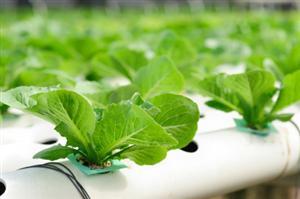| Complexity level: | 5 |
| Project cost ($): | 60 |
| Time required: | 1 day for preparation 21 days for observation |
| Material availability: | May be found at a nursery |
| Safety concerns: | Basic safety requirements |
Hypothesis
The Peperomia plant’s roots grow faster in hydroponics solution than in soil.
Overview
Hydroponics
Hydroponics is the technique of growing plants in a nutrient solution instead of soil. Under normal conditions, the plant will obtain the required nutrients from soil. Water will help to dissolve the nutrients in the soil so that they can be absorbed via the plants’ roots . In hydroponics however, nutrients are introduced directly to the plants’ roots through the nutrient solution.
There are various benefits reaped from growing plants hydroponically - there is no need for soil, the water can be recycled and the amount and type of nutrients required can be specifically controlled to suit the plant . This means that in places with insufficient arable land, vegetables and fruits may yet be grown in sufficient quantities. Hydroponics also produces a higher crop yield and can be carried out all year round.
Disease control is also easier when plants are grown hydroponically They can be shifted away from contaminated areas. They are also free from soil borne diseases . Pesticide use is reduced, and furthermore, there is no risk of soil pollution due to the use of pesticides.
Scientific Terms
Materials
The materials required for this science fair project are:
- 1 Peperomia plant
- 10 plastic containers
- 5 plastic containers filled with soil
- 1 bottle of hydroponic plant food
- 1 pair of scissors
- Tap water
- 1 ruler
- 1 black marker pen
Procedure
1. The independent variable in this science fair project is the method of cultivation – whether the plant is grown in soil, or hydroponically. . The dependent variable is the length of the plant’s roots after 3 weeks. This is determined by measuring the length of the roots using a ruler. The constants (control variables) are the amount of soil or nutrient solution, the type of plant, the length of the stem, the length of time allocated for the experiment and the amount of sunlight received by the plants.
2. Cut 10 pieces of the Peperomia plant stem into 8 cm lengths.
3. Label the 5 plastic containers “soil 1” to “soil 5”. Label the other 5 plastic containers “hydro 1” to “hydro 5”.
4. Make 3 holes at the bottom of the plastic containers marked “soil 1” to “soil 5”. Fill these containers with soil. Plant 1 Peperomia plant stem in each of the container. Water the containers daily with 50ml of water.
5. Mix the hydroponics plant nutrient is with water according to the instructions stated on the packaging. Pour the mixture into the plastic containers marked “hydro 1” to “hydro 5”. Place 1 Peperomia plant stem in each of the container.
6. Place the 10 plastic containers at a place where there is adequate sunlight.
7. Remove the plant stems from their respective containers after 3 weeks,. Measure the length of their roots Record the measurements in the table provided below.
Results
The roots of the Peperomia plants in the hydroponics solution are longer, compared with the ones planted in soil.
| Planting method | Length of root measured after 3 weeks (mm) | Average (mm) | ||||
| 1 | 2 | 3 | 4 | 5 | ||
| Hydroponics | 9.4 | 8.6 | 10.1 | 8.2 | 9.2 | 9.1 |
| Soil | 4.5 | 6.3 | 5.1 | 5.6 | 5.2 | 5.3 |
Conclusion
The hypothesis that Peperomia plant’s roots grows faster hydroponically than in soil is proven to be true.
The largest hydroponics farm in the world is located in Wilcox Arizona. It belongs to Eurofresh farms. This farm produces over 50 million kilograms of pesticide free tomatoes every year! To increase the yield of hydroponic farms, carbon dioxide is sometimes injected into the hydroponic environment. This is fairly easy to implement especially in hydroponic greenhouses.
Also consider
The science fair project can be repeated by varying the type of plants used for the experiment. Also, it would be interesting to see if different types of nutrient solutions affect the rate of growth of the roots.
References
Hydroponics - http://en.wikipedia.org/wiki/Hydroponics
Simple hydroponics system for leafy vegetables - http://www.agnet.org/library/pt/2002037/

